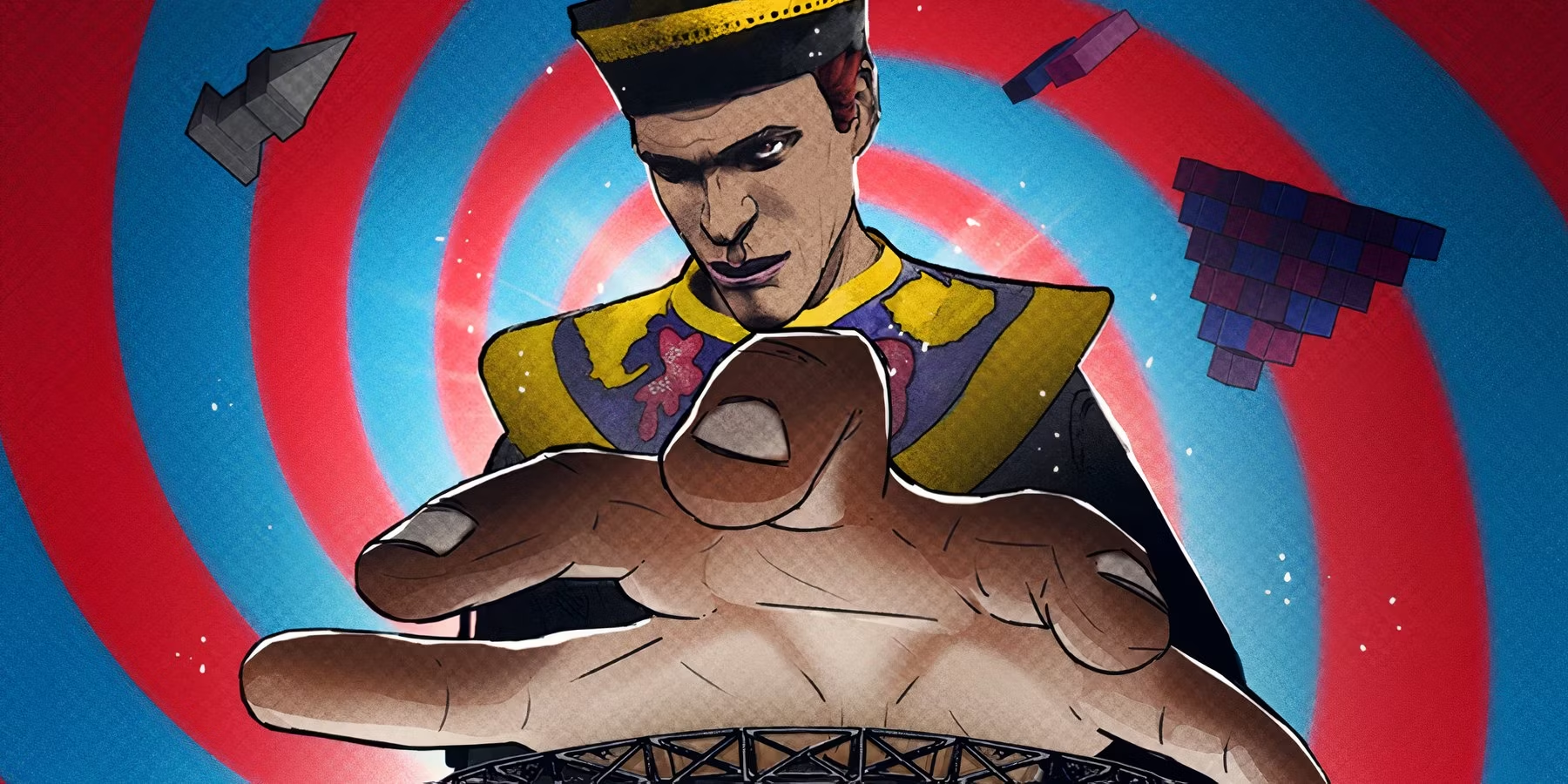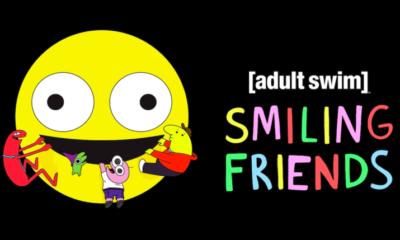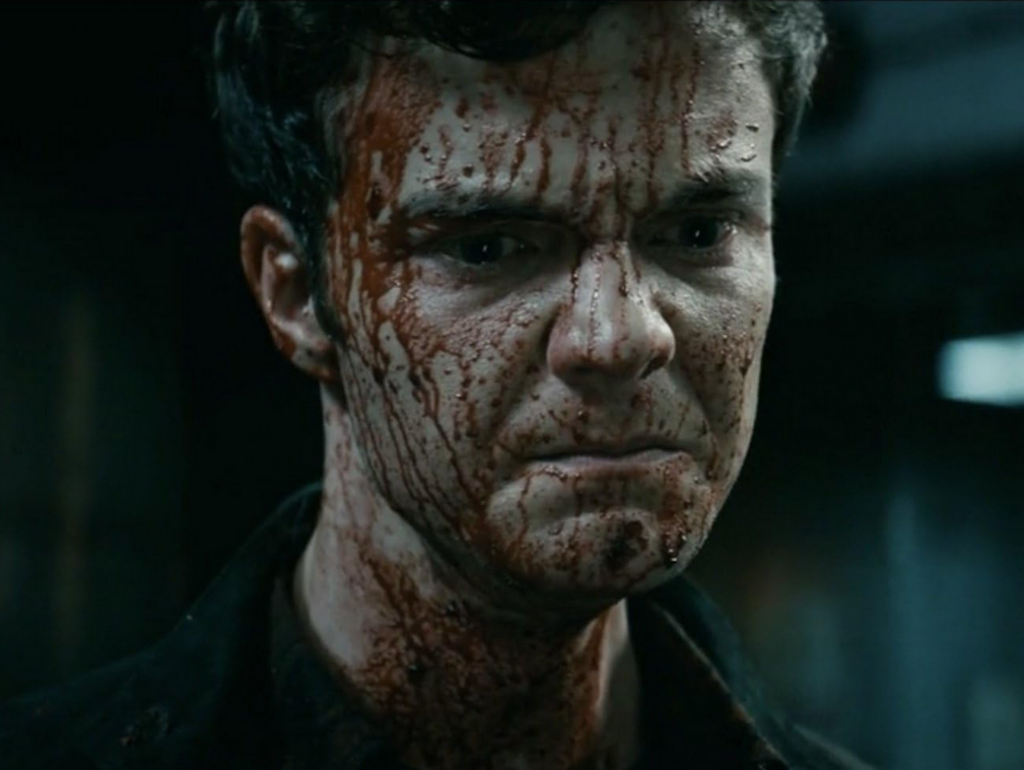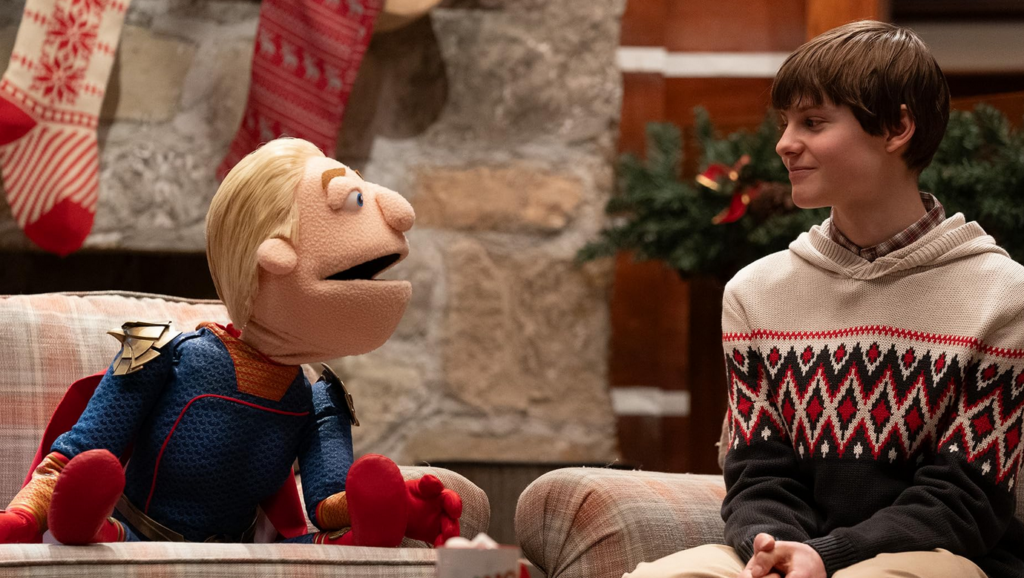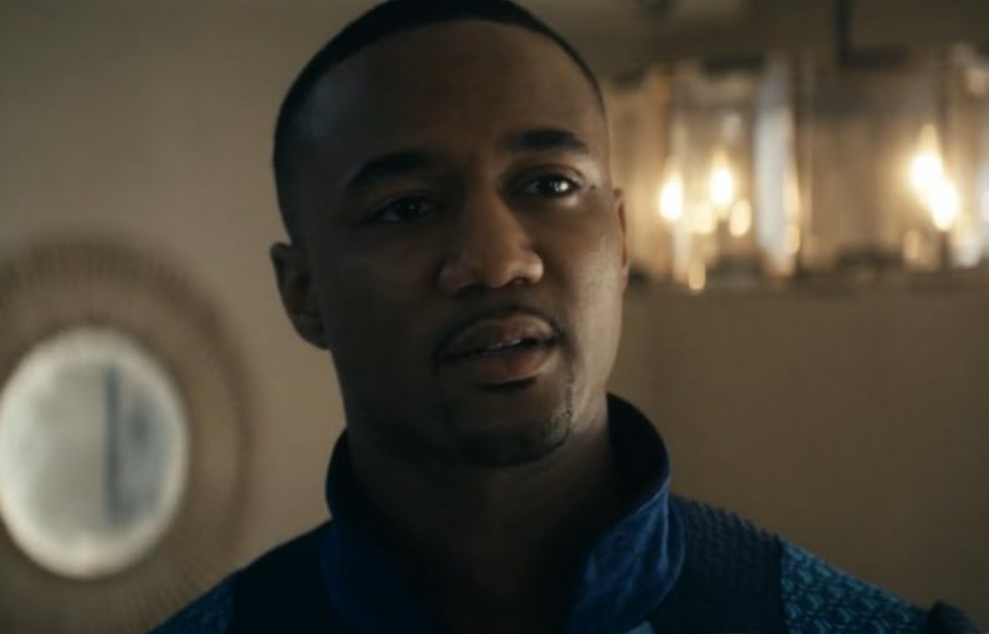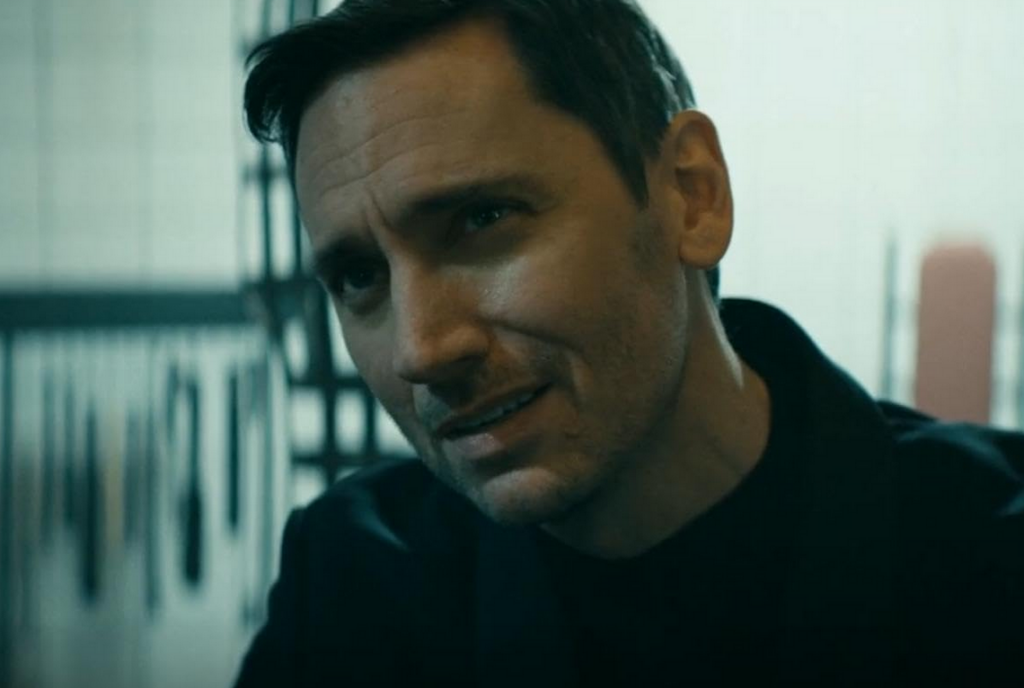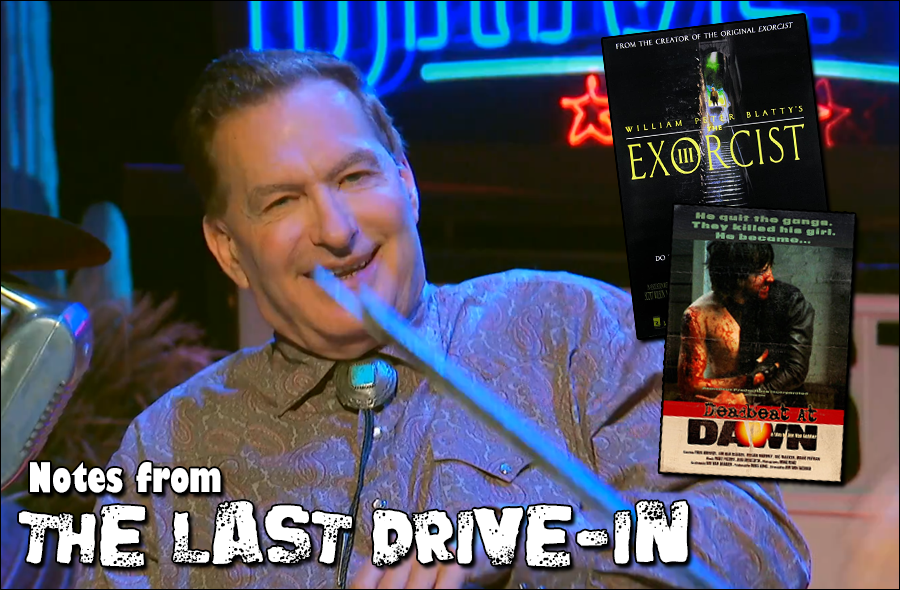
Notes from The Last Drive-In: S2E5
More Videos
Published
4 years agoon
We’re past the halfway point for season two of The Last Drive-In with Joe Bob Briggs and I am already feeling sad. Let’s not dwell on what is coming to an end, however. We already have confirmation of a summer special, after all. For now, let’s dive into two movies that cannot be more different.
Tonight’s double feature consisted of William Peter Blatty’s The Exorcist III (1990) and Jim Van Bebber’s Deadbeat at Dawn (1988). I was back to live-tweeting the double-feature for the night, so apologies now for any awful puns and jokes you see embedded into this review and recap.
The only way to get into the disturbed ward is to be down with the sickness.#TheExorcistIII #thelastdrivein @therealjoebob @kinky_horror @shudder— Haunted MTL 🏳️🌈 (@HauntedMTL) May 23, 2020
The Exorcist III (1990)
That huge ass portrait of himself in his office is a power move.#TheExorcistIII #thelastdrivein @therealjoebob @kinky_horror @shudder— Haunted MTL 🏳️🌈 (@HauntedMTL) May 23, 2020
Opening Rant: Toxic masculinity and a poorly thought out razor ad.
The sequel to the sequel to one of the most culturally important horror films of all time had a lot that could have gone wrong. What is amazing is that The Exorcist III is actually damn good despite the awful The Exorcist II: The Heretic. A lot of that is the result of the tenacity of the strange and passionate William Peter Blatty, author of the original Exorcist novel. That’s not to say that The Exorcist III is without flaws, however. The film has a number of issues, but ultimately these problems are not enough to derail what turns out to be a strange follow-up to the alarming possession of Regan MacNeil.
The film is, foremost, a masterclass of acting. The acting here is so good that it sets George C. Scott opposite Brad Dourif and Scott is the one who comes off as subdued compared to Dourif. It is a very “talky” sort of film which seems unusual for a Drive-In feature, but it works. Most of the deaths occur off-screen, but it works. Like last season’s The Changeling, also featuring George C. Scott, The Last Drive-In makes room for something a little more measured and, I dare say, classier in its approach to horror. It is the film’s restraint in the visual excess of horror that allows what it does engage in to mostly succeed. Namely an amazing transition from Jason Miller to Brad Dourif via an editing trick and perhaps one of the finest jumpscares ever committed to film.
Yet, the film also has substantial problems. The murdering off of one key character sacrifices a fascinating homosocial relationship for cheap motivation. A strange dream sequence comes off as a budget Twin Peaks scene and is goofier than insightful. Lastly, a hasty attempt to include an exorcism into a story that didn’t need it ruins the ending to what was an overall creepily effective film.
So while The Exorcist III mostly does what is necessary of a good sequel, specifically for The Exorcist, too many issues mar it. As brilliant as some of Blatty’s choices were as the mind behind the film it is necessary to have a seasoned veteran to bounce off of when it comes to film.
Joe Bob’s assessment of the film is perfectly fine. Three stars is a fair score for the movie. He ultimately had a lot to say about it. There is a trend where the more mixed he is on a film the more in-depth Joe Bob’s analysis and discussion of the film usually come off. It makes sense because things we love sometimes are harder to discuss than things we can be critical of. The Exorcist III is just one of those films where it was a perfect storm of issues narratively and behind the camera while also navigating the legacy of the original film.
While the second feature of the night is definitely more fun and a better Drive-In movie overall, The Exorcist III provides viewers with the sort of material that drives them to watch the redneck horror host in the first place; an honest assessment of the film, both good and bad, with observations about the craft of film itself. It sounds dismissive to just say it is “typical Joe Bob,” but that is a good thing. This is a perfect example of the appeal of The Last Drive-In.
I like The Exorcist III. I think people who claim to like it more than the original are probably being contrarians. It’s not a bad movie and it is probably the best sort of sequel to The Exorcist that a fan can ask for, but the fact remains that it is a deeply flawed film. Ultimately, I couldn’t rate it higher than three and a half Cthulhus.

Best Line: “This I believe in… I believe in death. I believe in disease. I believe in injustice and inhumanity, torture and anger and hate… I believe in murder. I believe in pain. I believe in cruelty and infidelity. I believe in slime and stink and every crawling, putrid thing… every possible ugliness and corruption, you son of a bitch. I believe… in you.” – Kinderman to what is clearly Pazuzu.
Deadbeat at Dawn (1988)
I just feel the grime dripping off every frame of this movie already.#deadbeatatdawn #thelastdrivein @therealjoebob @kinky_horror @shudder— Haunted MTL 🏳️🌈 (@HauntedMTL) May 23, 2020
Opening Rant: Poop coffee.
I think I first saw Deadbeat at Dawn at the end of my junior-high years. I recall it was a shitty VHS bootleg and it came from a kid named Eli who was super into Insane Clown Posse and bootlegged VHS copies of the hentai Dragon Pink and Golden Boy for all of the weird kids at my junior-high which turned out to be a lot of us.
I mention this because this sounds sketchy and grimy and is sort of the perfect way to experience the sketchy and grimy film that is Deadbeat at Dawn. The film is juvenile and punk in a fundamental way of just not giving a shit and indulging in such bizarre anarchistic impulses on and off camera that it becomes this sort of outsider art. I say this with love: Deadbeat at Dawn is an absolutely insane 81 minutes that probably should never have been released.
Deadbeat at Dawn is independent film-making at its most impulsive and punk. Cobbled together over four years by a director (Jim Van Bebber) who also plays the lead, the film was often shot without permits and resulted in a series of Jackass-style moments witnessed by unsuspecting people in the local community. It’s all dumb film students recording dumb, dangerous stuff and eventually managing to pull a movie out of it. Basically what every aspiring film-school student secretly desires to do.
It’s not a good movie but it is also a good movie. Deadbeat at Dawn is not well-written, the performances are amateur, and the story is just kind of non-existent. It features a sequence of the director/lead practicing his nunchucks and screaming in a Dayton, Ohio graveyard dealing with feelings about his budget-Satanist girlfriend. It’s an example of one of those films that know not to take itself too seriously and have fun with itself.
Yet, the film also is a gritty Kung Fu vengeance film, punctuated with moments of true despair with a simultaneously repulsive and sympathetic protagonist with one of the most insane last 20 minutes put to film. So much of this movie shouldn’t work but does. The film is just so grimy and textured. In another universe this would have been paired with Street Trash.
Joe Bob’s assessment of Deadbeat at Dawn is a full four stars punctuated by him saying “I loved it.” The film is pretty much perfect Drive-In fare and an example of something so beloved the conversation around it, while always insightful on the show, is also kind of dialed back. Perhaps this is in awe of the audacity of what Jim Van Bebber achieved. Regardless, several Sam Raimi references, including his own thoughts on the “punk action film” pop up in addition to referencing Joseph Campbell.
Perhaps the best part of all of this, however, is how Joe Bob Briggs highlights Van Bebber’s own philosophy: “Pain is temporary. Film is forever.” Our horror host points out just how crazy and punishing the assembly of this feature was. I know Joe Bob Briggs has written a lot of books, but I don’t know if he’s written one about Deadbeat at Dawn. If not, he should.
What impressed me most about Deadbeat at Dawn is how well it holds up. I’ve seen it maybe twice since junior-high, but goddamn does it still hold up. As a punk music fan, I think one of my livetweet riffs summarize my feelings on this film pretty well.
This movie is so punk that it crushed like 50 beers and played a 40 minute set over three hours.#deadbeatatdawn #thelastdrivein @therealjoebob @kinky_horror @shudder— Haunted MTL 🏳️🌈 (@HauntedMTL) May 23, 2020
Deadbeat at Dawn is totally worth four and a half Cthulhus. It’s too audacious not to be.

Best Line: “I hate people, man. I don’t care. I don’t give a shit. I don’t give a shit about nothin’. Man, all my life people have fucked with me. Don’t you fuck with me, man. I just fuckin’ hate people. I hate people and I don’t care. I just don’t fuckin’ care. I don’t care. I’m the baddest motherfucker you ever saw, man.” – Bone Crusher
HMTL Drive-In Totals
So, here are the official totals, courtesy of Shudder. It was a good night.
The Drive-In Totals tonight are promising just the right amount of Garden Sheers Fu 👀✂️ #TheLastDriveIn pic.twitter.com/txTD1xDMXj— Shudder (@Shudder) May 23, 2020 Get ready for these dangerously bloody Drive-In Totals #TheLastDriveIn pic.twitter.com/a15ZEeri5B— Shudder (@Shudder) May 23, 2020
As for our totals?
- 4 Helicopters
- $9-million in Reshoots
- 20 Dense Minutes
- 57 Weeks on the NYT’s Best Seller List
- $10,000 Scholarship
- Carp Monologing
- Inexplicable Fabio
- Spontaneous Dourif
- Down n’ Dirty Catholicism
- Awkward Crash Zoom
- Joe Bob Confusing
- Bible Versing
- Actor Slapping
- Hillbilly Joking
- Graveyard Fighting
- Graveyard Nunchucking
- Raimi Referencing
- Campbell Referencing
- Snake Slapping
- Dual Jocking
- But Punching
- South Carolina Joking
- Ouija Fu
- Creepy Confession Fu
- New York The-ate-er Fu
- Biblical Research Fu
- Powerwalk Fu
- Map Fu
- Burp Fu
- Sloppy Bar Pass Fu
- Sommelier Fu
- Car Fu
- Poorly Dubbed Cat Fu
- Darcy Cosplay: The Angel of Death
- Silver Bolo Award: The Horror Movie Podcast

Episode Score
Man, what a good night. These films could not be more different than one another. One is more literary and the other is more punk. It’s a strange combination that results in yet another great episode of The Last Drive-In.

And remember, folks…
The Drive-In will never die.
David Davis is a writer, cartoonist, and educator in Southern California with an M.A. in literature and writing studies.

You may like
We have come now to the finale of season four of The Boys. And while it didn’t have the literal blood fireworks I wanted, someone did get ripped in half in the air. So, that’s pretty close.
As a note, I will try to avoid spoilers as much as possible. This ending was a hell of a gut punch that should be experienced as blindly as possible. That being said, I will not be able to avoid spoilers and still give a full legitimate review. Proceed at your own risk.
The story
The main storyline for this episode is the attempted assassination of President-Elect Robert Singer. The Boys join forces with the Secret Service to protect him. But, as we learned last episode, Annie has been replaced with a shapeshifter. A shapeshifter that was welcome not just into Hughie’s anus, but into the protective bunker in which the President-Elect is hiding.
What worked
The first thing I want to discuss about this episode is the ending. But we need to do this carefully.
The important thing here is that the ending breaks your heart on so many levels. So many terrible things are happening to characters that it’s almost hard to keep track. And each moment is significant to each character.
I cannot give a specific example. But no matter who your favorite character is, you’re going to weep for them.
Unless your favorite character is Sage. And this is the next thing that made this episode so fantastic.
I don’t think I’m spoiling anything to say that Sage’s plans worked out exactly as she wanted them to. And she got exactly what she wanted.
What she wanted wasn’t power. It wasn’t money or fame or vengeance. It wasn’t to win the love of anyone. She just wanted to see if she could do it.
That is a terrific, terrifying motivation! Because all she wants is to play a massive game of chess with people as pieces. She doesn’t care about anyone. She just wants to see how many people she can manipulate. She just wants to set things on fire to see if she can.
Fantastic. A plus villain work.
The next thing I want to discuss is a cornerstone of the whole series.
The morality of The Boys shifts through the series. While it’s very much a battle to save the world from overpowered super monsters, it’s also a battle for the souls of our real heroes. And in that battle, there are two warring factors. We have Hughie, always trying to bring everyone up to a better level. And we have Butcher, who has no problem at all hitting rock bottom with a shovel in hand to do some more digging.
In this episode, we saw almost every member of The Boys challenged. Will they rise to their higher angels, or sink with their demons?
On a similar note, I am so glad that the writers kind of addressed my issues with Annie. They did this by having the shapeshifter get right into her face and accuse her of thinking that she’s better than everyone.
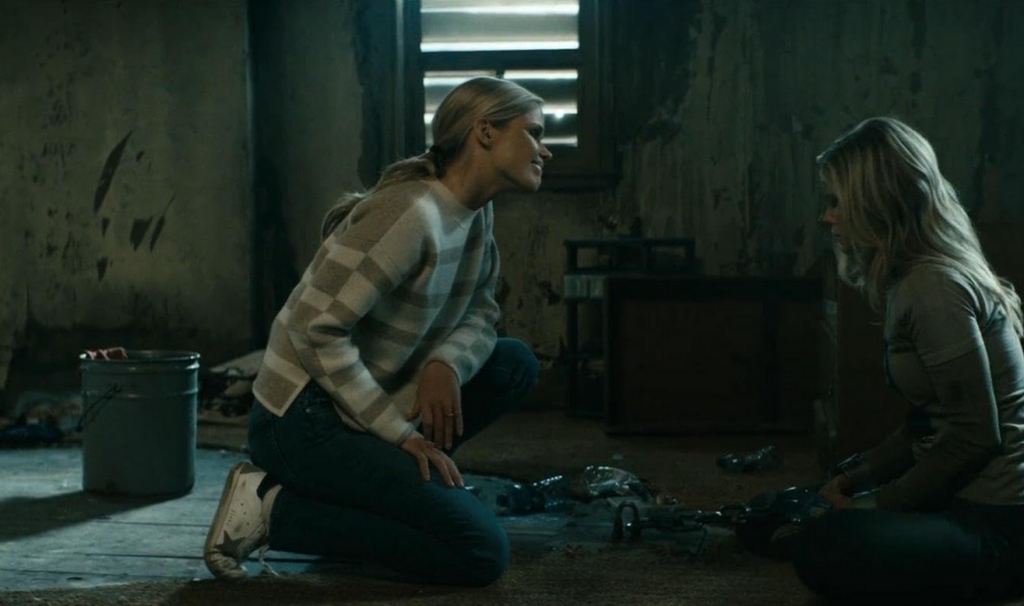
While that was devastating for the character, it was a little cathartic for those of us who felt like Annie was a little too good of a good guy.
What didn’t work
This is a small matter, but it is an issue that I want to address. After Annie finds out that Hughie slept with her doppelganger, she is furious at him.
In addition to this being unfair, it’s also a very cliche element to add. In almost every instance of a lookalike in fiction, there’s a moment where the love interest of the victim is fooled. Or almost fooled. And it’s always the same fight. It’s just played out and predictable. I’m just glad that it didn’t last very long.
Now that we’ve come to the end of the season, I can officially say that it was amazing. The story was deep and rich. The special effects were a stomach-turning good time. The character development was spot-on and satisfying. And, of course, it left me just about gagging to see what happens next. Unfortunately, it looks like we’ll have a bit of a wait. Because as of right now, the fifth season isn’t expected until 2026.

We’ve reached the second to last episode of The Boys, season four. And, as is appropriate for the penultimate episode of any show, things have to get a lot worse before they can get better.
Let’s discuss.
The story
Christmas is coming, and the whole world is getting ready. Ryan, despite being very clear that he didn’t want to appear on any TV shows or movies, has been strong-armed into participating in a Vought puppet Christmas special. He draws the line, though, when asked to sing about turning one’s parents in if they start talking about woke things.
Meanwhile, The Boys are trying to keep each other together. Butcher decides to take Sameer to the rest of the team. He also gets Frenchie out of prison, hoping they can make the Sup virus necessary to finally take down Homelander. Instead, this decision means disaster for one member of the team.
What worked
I first want to talk about Ryan’s speech near the end of the episode. Because it was exactly the moral of this whole story.
Ryan’s dad is a monster. His stepdad is also kind of a monster. But Ryan is a good kid. He cares about people, about family. And while he loves Homelander and Butcher, he doesn’t want to be like them.
Even better, this speech sounded like something a kid would say. Ryan didn’t open his mouth and start sounding like a college student all of a sudden. He sounds like a kid who misses his mom and wants to live up to the good standards she set for him. And I think that’s terrific.
Speaking of Homelander, he shot himself in the foot in this episode. I said earlier in the season that his hubris was going to be his downfall, and I was right. Without Sage, he just has the same weaknesses he’s always had. He’s going to fail because he just isn’t clever enough or patient enough to succeed.
Without Sage, I think a win is in the bag for The Boys. This isn’t to say that Homelander by himself isn’t dangerous. It’s just that he’s more like a wildfire than a controlled burn. He’s going to cause a lot of damage, but not get anything he wants out of it.
More’s the pity for him and everyone else who has to share his world.
Finally, I am thrilled with A-Train’s redemption story. I love that he wants to be a good person not to save himself, but to be a good person. His honest, pure and warm reaction to that little kid smiling at him in the last episode was heartwarming. It changed him in a moment, bringing to light a goodness that he’s been keeping under wraps for a long time.
This, along with Ryan’s courageous speech, proves once again what The Boys does so well. Yes, it’s gruesome. Yes, there’s blood and balls and batshit events. Yes, someone occasionally gets ripped in half. But there is a true human goodness in the story. One that we catch glimpses of. There are good people among the monsters. There is hope for redemption.
What didn’t work
Of course, so few things in this life are perfect, and this episode was no exception. For instance, I was irritated by the insinuation that Butcher cheated on his wife.
That just doesn’t make any sense. We’ve seen flashbacks of Billy and Becca. They were happy. He was happy. He was head over heels for her. And I don’t think it’s realistic or necessary for the character to throw in that he cheated. It does nothing to add to the story, it’s just a weird and offputting moment.
Doesn’t Butcher have enough to hate about himself? Can’t we just give him that at least he was a good husband?
Finally, I kind of hate that we ended up with Annie being caught. It’s just cliche, which is something I don’t normally say about this show. It feels lazy unless they do something very clever with it in the last episode. Which, I suppose, they might.
Next up is the season finale. And with this season being as insane as it has been, I’m expecting nothing short of bloody fireworks. And I mean literal fireworks of blood. At this point, would it surprise anyone?
 (4 / 5)
(4 / 5)
Episode six of The Boys was one of the most surprising episodes of the series so far. And that is certainly saying something. Because this season has so far been bonkers.
The story
Our episode today revolves around a party at Tek Knight’s lovely mansion. Yes, it does look just like Wayne Manor.
The Boys know that Tek Knight is working with Homelander on something, but they don’t know the details. So they decide to send Hughie in to bug the mansion.
Because that’s worked so well the other two times he’s tried to hide a bug!
It should surprise no one that this time goes no better. Hughie finds himself in Tek Knight’s basement. And by that I mean his BDSM dungeon.
Meanwhile, the party upstairs is no less disturbing. Homelander and Sage are trying to convince some well-off political donors to support a cue after the election. When pressed for details on his plan, Homelander freezes. He looks to Sage for help, but she wasn’t recently shot in the head and still in the junk food stage of her healing.
Fortunately, or unfortunately depending on your point of view, Neuman jumps in and saves the day.
What works
If I’m going to say one thing about this episode, it didn’t hold back at all. I didn’t expect them to show a character masturbating, sitting their bare behind on a cake, or spraying breastmilk into someone’s face. But every time I thought they’d cut the scene and let something be left to our imagination, they did not do that.
This is a dangerous move. Whenever you show the monster, you run the risk of them not being scary enough, or gross enough. As Stephen King says in Danse Macabre, to leave this sort of thing to the imagination if the reader makes things so much worse. So when they finally experience the monster, they might say that this isn’t so bad. It could have been so much worse.
But in this case, they managed to avoid that by making the scenes, especially the ones in Tek Knight’s dungeon, so much worse than I imagined it would be.
What doesn’t work
While this was a deeply disturbing episode in many ways, there was one really innocent and sweet moment.
And yes, I did have a problem with it.
Confronted by Firecracker, Annie decides to apologize for spreading rumors about her when they were kids. She tells her that she is genuinely sorry.
And I believe her. I don’t think Firecracker did, but I did.
So why is this an issue? Because I’m starting to think that Annie is maybe too nice. She is too good.
I know that Annie is our good guy. But every one of the other good guys has flaws. Hughie let his pride get in the way and took Temp V. MM hid himself from his daughter instead of teaching her to work through her emotions. Kimiko is far too closed off and has a hard time trusting others. Frenchie numbs himself with drugs. And well, what hasn’t Butcher done?
It is unrealistic that Annie is just so kind and so flawless. We all have shadows in our personalities. We all have weaknesses, we all mess up. We all do things we wish we could take back. The fact that Annie doesn’t seem to have anything like that is not just unrealistic. It’s infantilizing.
Give her some deep dark secrets. Give her something real to regret.
This was a shocking episode, even for someone fairly jaded like me. I wasn’t expecting the sort of weird sexual depravity, though I guess maybe I should have seen it coming. It was dark, upsetting, tense, and funny as hell. And with just two episodes left in the season, I can imagine the stakes are only going to get higher.
 (4 / 5)
(4 / 5)
By the way, if you like my writing you can get my short story, Man In The Woods, on Smashwords and Amazon.



